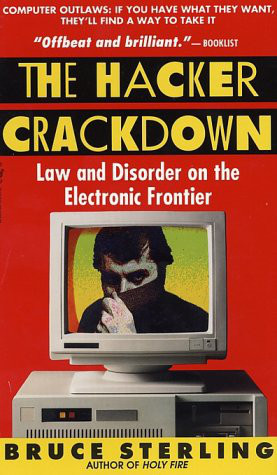Casey Reas, Ben Fry: Processing: A Programming Handbook for Visual Designers and Artists (2007)
Filed under manual | Tags: · art, code, computer animation, computer art, design, image, interactivity, open source, performance, processing, programming, software, typography

It has been more than twenty years since desktop publishing reinvented design, and it’s clear that there is a growing need for designers and artists to learn programming skills to fill the widening gap between their ideas and the capability of their purchased software. This book is an introduction to the concepts of computer programming within the context of the visual arts. It offers a comprehensive reference and text for Processing (www.processing.org), an open-source programming language that can be used by students, artists, designers, architects, researchers, and anyone who wants to program images, animation, and interactivity.
The ideas in Processing have been tested in classrooms, workshops, and arts institutions, including UCLA, Carnegie Mellon, New York University, and Harvard University. Tutorial units make up the bulk of the book and introduce the syntax and concepts of software (including variables, functions, and object-oriented programming), cover such topics as photography and drawing in relation to software, and feature many short, prototypical example programs with related images and explanations. More advanced professional projects from such domains as animation, performance, and typography are discussed in interviews with their creators. “Extensions” present concise introductions to further areas of investigation, including computer vision, sound, and electronics. Appendixes, references to other material, and a glossary contain additional technical details. Processing can be used by reading each unit in order, or by following each category from the beginning of the book to the end. The Processing software and all of the code presented can be downloaded and run for future exploration.
Essays by: Alexander R. Galloway, Golan Levin, R. Luke DuBois, Simon Greenwold, Francis Li, Hernando Barragán
Interviews with: Jared Tarbell, Martin Wattenberg, James Paterson, Erik van Blockland, Ed Burton, Josh On, Jürg Lehni, Auriea Harvey and Michaël Samyn, Mathew Cullen and Grady Hall, Bob Sabiston, Jennifer Steinkamp, Ruth Jarman and Joseph Gerhardt, Sue Costabile, Chris Csikszentmihályi, Golan Levin and Zachary Lieberman, Mark Hansen
Foreword by John Maeda
Publisher MIT Press, 2007
ISBN 0262182629, 9780262182621
Length 710 pages
project website
publisher
google books
PDF
All code examples in the book (ZIP)
Keith Cary Curtis: After the Software Wars (2009)
Filed under book | Tags: · floss, free software, hardware, software

Given the technology that’s already available, we should have cars that drive us around, in absolute safety, while we lounge in the back and sip champagne. All we need is a video camera on the roof, plugged into a PC, right? We have all the necessary hardware, and have had it for years, but don’t yet have robot-driven cars because we don’t have the software. This book explains how we can build better software and all get our own high-tech chauffeur.
Publisher Keithcu Press, 2009
ISBN 0578011891, 9780578011899
Length 300 pages
Review (Newmediatheory.net)
More info (google books)
Comment (0)Bruce Sterling: The Hacker Crackdown: Law and Disorder on the Electronic Frontier (1992–) [EN, ES, CZ]
Filed under book | Tags: · cyberspace, hacker culture, hacking, software, telephone

“The AT&T long-distance network crashes, and millions of calls go unanswered. A computer hacker reprograms a switching station, and calls to a Florida probation office are shunted to a New York phone-sex hotline. An underground computer bulletin board publishes a pilfered BellSouth document on the 911 emergency system, making it available to anyone who dials up. How did so much illicit power reach the hands of an undisciplined few – and what should be done about it?
The book discusses watershed events in the hacker subculture in the early 1990s. The most notable topic covered is Operation Sundevil and the events surrounding the 1987-1990 war on the Legion of Doom network: the raid on Steve Jackson Games, the trial of ‘Knight Lightning’ (one of the original journalists of Phrack), and the subsequent formation of the Electronic Frontier Foundation. The book also profiles the likes of ‘Emmanuel Goldstein’ (publisher of 2600: The Hacker Quarterly), the former Assistant Attorney General of Arizona Gail Thackeray, FLETC instructor Carlton Fitzpatrick, Mitch Kapor, and John Perry Barlow.”
In 1994, Sterling released the book for the Internet with a new afterword.
Publisher Bantam Books, 1992
Literary Freeware: Not for Commercial Use
ISBN 055356370X
323 pages
The Hacker Crackdown (English, 1992/1994, HTML, EPUB, Kindle, TXT)
The Hacker Crackdown (English, audiobook, read by Cory Doctorow, 2008, MP3, OGG)
Le Caza des Hackers. Ley y Desorden en la Frontera Electrónica (Spanish, trans. trans. El Equipo de Traductores de Kriptópolis, 1999, added on 2020-4-13)
Zátah na hackery (Czech, trans. Václav Bárta, 2004, HTML, updated on 2020-4-12)

